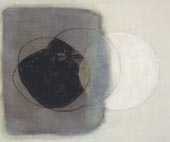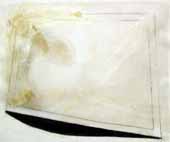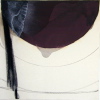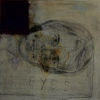Wolfgang Seierl back home text poitevin
recent painting


Twice
two pictures
Reflections on some paintings of Wolfgang Seierl
Mysterious noise of the painting in our inner ear, the forms speak,
speak to us, - and the colours, the lines. They do this in a foreign
language which wakens in us the threefold power of confusion, of
recognition and of comprehension. Or that of unappreciativeness,
when, dazed at all that secret noise, something inside of us gives
up. Then the door closes. The look becomes eye again, and silence
expands.
In these works of Wolfgang Seierl a small tube - incongruous but
important - discloses its identity. This incursion of the industry
into the tie that ties the look, the landscape and the hand together,
made the fortune of the impressionists. In his abstract works he
unties the ties which stiffens the look and let him accept the
visible like a broken obviousness.
There are at least three pictures in one painting. That one that
answers the perception,
that one that disturbs it, and that one that, coming from somewhere
else, represents
the unthought worlds designed by the brain. A painting is these three
pictures, but often it works on the foreground only, the rest letting
lose in inattention.
Here, like a miniature bomb thrown into the folds of thoughts,
comes a directly perceptible subject in order to throw into the
picture a confusion of another kind that, confused-confusing, builds
an abstract work. It uncovers in the strictest sense the function
even of the painting’s perception.
Everybody knows this impregnable exterior which is the world that
invents everybody by himself at the same time. Clear masses, or maybe brown
ones, light or heavy lines, plait of lines or apertures
against the distance, - these elements of the painting mean that I
have to invent what I perceive.
The tube, drawn with the precision that could have been put here by
an artisan of the presence, crunches in the eye, - little keen
science of a hidden strategy that is repairing the surface. It
awakens in us the function of recognition and simultaneously forces us
to put up with the fact of the seeing and the condition of a possible
gesture.
The hand has run through the tube before having started to move. The
eye comes back through the tube in the very moment, in which it
enjoys the confusion that provokes in it the unknown part which is
the painting itself. The one hunts the other but also calls for it.
Wolfgang Seierl shows us that there is a fourth picture in the
picture which evokes and denunciates the motionlessness of the look
and lets vibrate the unconceivable image, which carries in itself the
visible, all visible and us in it, and it in us.
And we discover that all pictures rise of the incessant work of our
body, which cuts out a part of the visible to take it in greedily and
to cut off a part of the dream in order to throw it outside greedily
as well. The coloured mass, the line interlaced with herself, the
uncertain form that is saying „I’m here“ meet with a little tube
which also says „I’m here“, and all both saying „Look at me“.
And we know that we are what we see – boarder of sulphur,
bespattering his doubled delusions, on the brain-retina of the painting which
is not accessible to thinking.
Jean Louis Poitevin 2009
![]()
![]()
![]()
untitled, oil/canvas/60x60cm/2009
![]()
![]()
![]()
selfportraits I-IV
oil/canvas/50x60cm/2007
![]()
![]()
![]()
untitled
oil/canvas/50x80cm/2007..................oil/canvas/60x40cm/2007
paintings 2004 - 2006 gallery I gallery II






series "Passage to India", 2004, oil/acrylics on canvas, 60 x 50 cm
each










Cycle "Liebe Erde" 2003,
oil/canvas, 40x40cm each